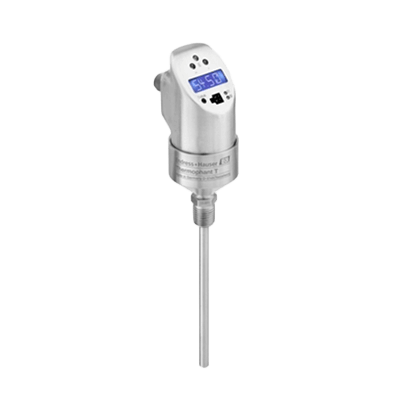What Is a Temperature Switch?

A temperature switch is a control device equipped with a temperature sensor that measures room temperature and a power supply function.
It starts supplying power when the temperature measured by the temperature sensor is higher than the set temperature and stops supplying power when the temperature measured by the temperature sensor is lower than the set temperature.
The use of a temperature switch makes it possible to operate the load automatically in conjunction with the room temperature condition. As a result, the operation time of the load can be made more efficient, leading to power savings.
Uses of Temperature Switches
Temperature switches are used to connect loads that operate on 100 VAC or 200 VAC power supplies and operate or stop the loads according to the room temperature.
In many cases, fans or ventilation fans are used as the connected load. When a fan is used as the load, the fan operates only when the room temperature is high to cool the equipment, etc. When a ventilation fan is used as the load, the fan operates only when the room temperature is high to cool the equipment, etc. If a ventilation fan is used for the load, air can be ventilated only when the room temperature is high.
Principle of Temperature Switches
A temperature switch consists of a power input section, a control section, and a power output section. The power output section is connected to the load, and the power input section is connected to a 100 VAC or 200 VAC power supply to operate the connected load.
1. Control Section
The control section consists of a temperature sensor and a relay drive circuit. The control section turns on the relay of the power supply output section when the room temperature measured by the temperature sensor is higher than the set value, and turns off the relay of the power supply output section when the room temperature is slightly lower than the set value.
2. Power Supply Output Section
The power supply output section consists of a power supply relay and a thermal fuse. When the relay is ON, power is supplied to the load; when the relay is OFF, power is not supplied to the load. The current fuse prevents the temperature switch from overheating, igniting, or smoking in the event of a load overcurrent.
How to Select a Temperature Switch
The key to selecting a temperature switch is its voltage rating and capacity rating. Correct selection will help protect against fire and electric shock and prevent switch failure.
1. Rated Voltage
There are three types of rated voltage for temperature switches: single-phase 100 V, single-phase 200 V, and three-phase 200 V. The rated voltage of the temperature switch should be the same as the rated voltage of the connected load.
If a 200 VAC power supply is connected to a temperature switch with a rated voltage of 100 VAC, the relay inside the temperature switch may burn out. If a 100 VAC power supply is connected to a temperature switch with a rated voltage of 200 VAC, the temperature switch will not operate properly because the operating voltage of the relay will be insufficient.
2. Rated Capacity
The rated capacity of a temperature switch is defined by its rated current and starting current. Rated current is the steady-state current that flows during normal operation, and startup is the degree-state current that flows only when the load starts operating, which is a larger current value than the rated current.
The rated capacity of the temperature switch must be greater than the rated capacity of the connected load. Applying a current greater than the rated capacity to the temperature switch will cause the current fuse in the temperature switch to blow or the relay to melt or stick to fail.
If the rated capacity of the temperature switch is not sufficient, an effective countermeasure is to connect an auxiliary relay, which is larger than the rated capacity of the load, between the temperature switch and the switch.
3. Adapter Type
In general, temperature switches, the power connection where the power supply line is connected, is a terminal block, but in adapter type temperature switches, the power connection is a power outlet.
If the power supply connection is a terminal block, it is necessary to process the covering of the power wire before connecting the temperature switch to it.
If the power supply terminal of the connected load has the shape of a power plug, it is easier to use an adapter type temperature switch.